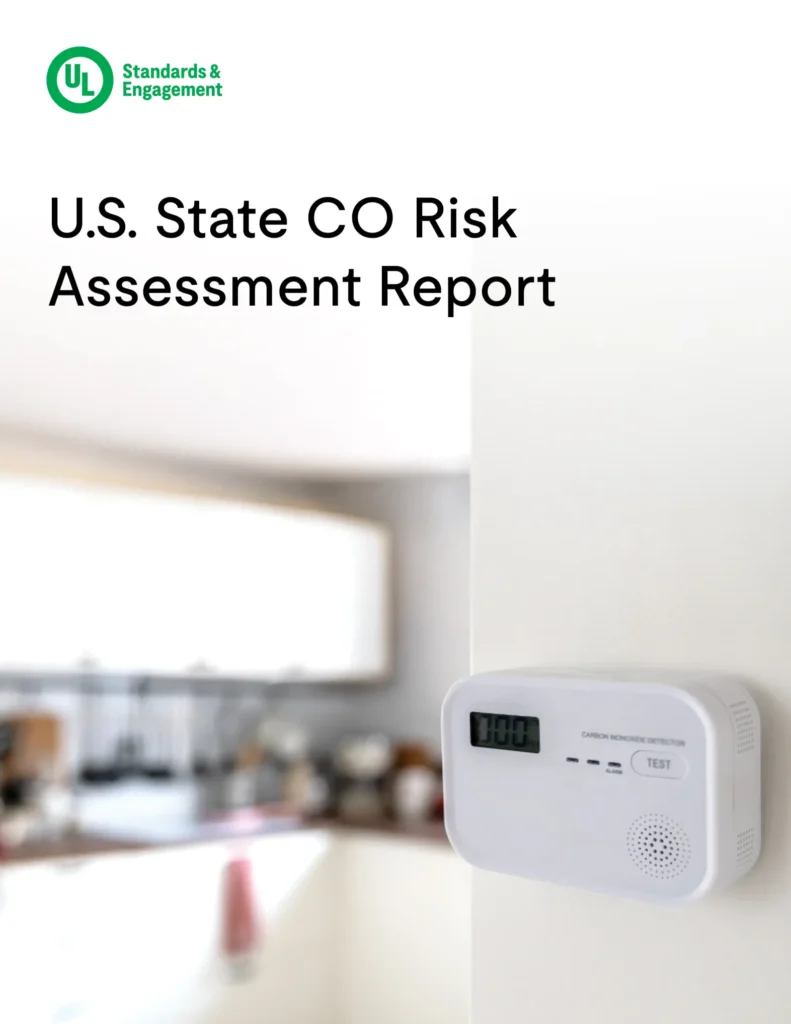Every year, at least 430 people in the U.S. die from unintentional carbon monoxide poisoning and an additional 50,000 people seek emergency care due to accidental exposure. These numbers are more than just statistics. Each one is a tragedy.
As a safety science and advocacy organization, we at UL Standards & Engagement closely monitor reports of deaths and injuries from products, appliances, and systems that people encounter in everyday life, and CO poisonings are among the most heartbreaking. Completely unaware of the present danger from a faulty furnace, a broken water heater, or a car with a keyless ignition accidentally left idling in the garage, a family might go to bed one night and not wake up the next day. And since carbon monoxide is completely odorless and colorless, there’s often no way to know there’s a problem without a CO detector.
These threats are not just limited to the home. In 2022, a gas appliance at a Pennsylvania daycare center led to 57 people, including 27 children, being injured from CO poisoning. In 2023, a child’s birthday party at a hotel swimming pool in Minnesota nearly turned fatal from CO leak caused by a pool heater. And just last month, Miller Gardner, the 14-year-old son of former New York Yankees player Brett Gardner, died of CO poisoning in his sleep while on vacation with his family at a hotel in Costa Rica. With a working CO detector present, these stories and many more like them would have never happened.
However, regulations and codes regarding CO alarm installation requirements are currently inconsistent across the U.S. In many states, serious injuries and deaths have occurred because CO alarms were not required by law and were therefore not present to detect the CO leak in its earliest stages.
Assumed protection in public places has created a false sense of security. According to our 2024 report, Understanding the Silent Threat, half of Americans do not worry about exposure to CO in public spaces because they believe that CO alarms are installed; further, 46% of travelers do not worry about CO exposure when staying in hotels and rental properties because they assume CO alarms are installed, and another 44% say they believe every state has laws that require alarms. When it comes to carbon monoxide, however, the cost of that false assumption could be fatal.
The ULSE CO Risk Assessment

Recognizing the urgency of this silent threat, UL Standards & Engagement developed the CO Risk Assessment to evaluate each U.S. state’s code and regulatory efforts, health outcomes, and public awareness. Published today, the CO Risk Assessment serves as both a benchmark and a call to action. In our evaluation, we spotlight successes and best practices that have led to exceptional CO safety outcomes in many states. We also outline recommendations for states to improve CO safety.
Our hope is that policymakers, community safety personnel and advocates, and health professionals will use this assessment as a roadmap to improve outcomes and reduce CO poisoning in their state.
Carbon monoxide is an invisible threat, but not one that can be ignored. Download the UL Standards & Engagement CO Risk Assessment today to learn more about CO safety in your state.